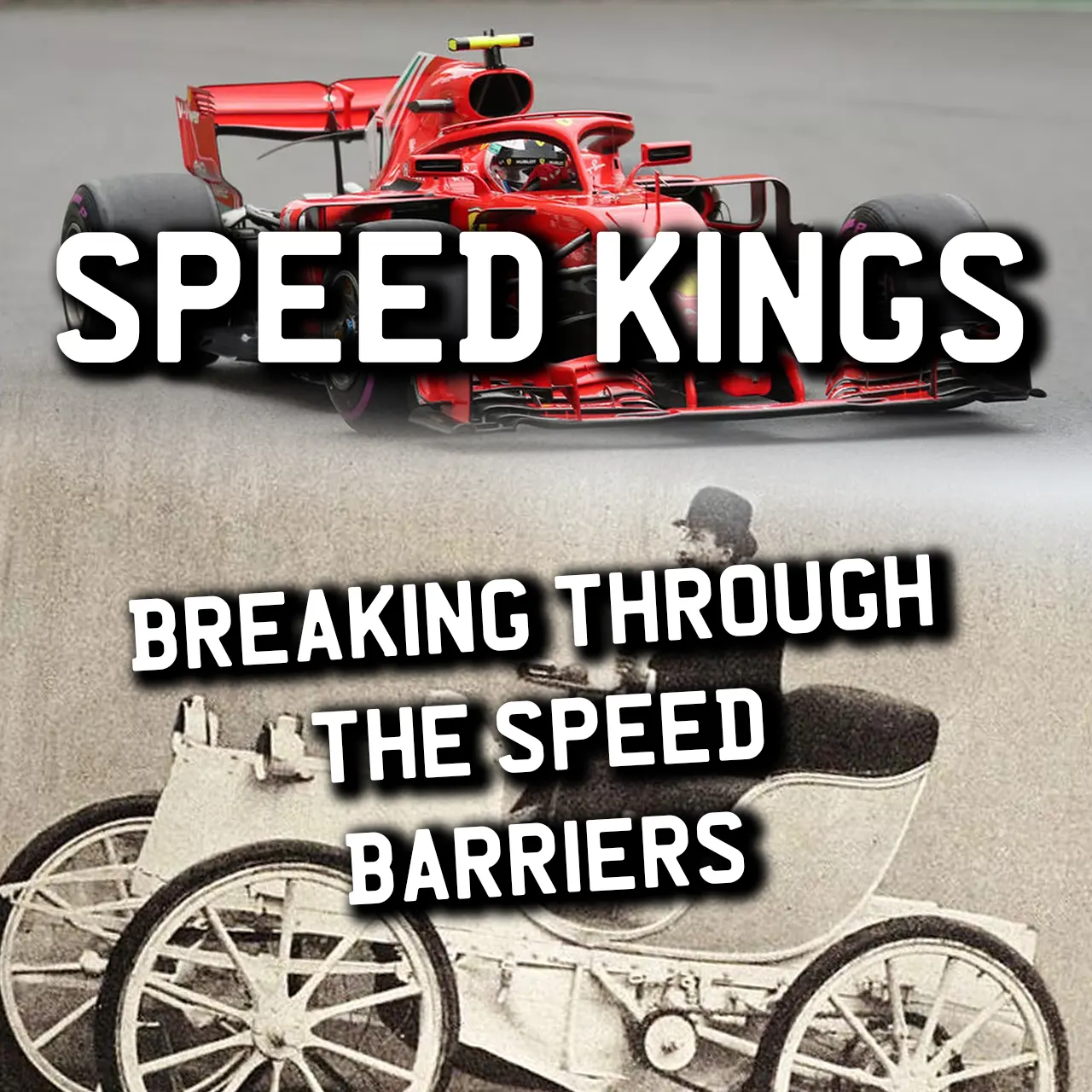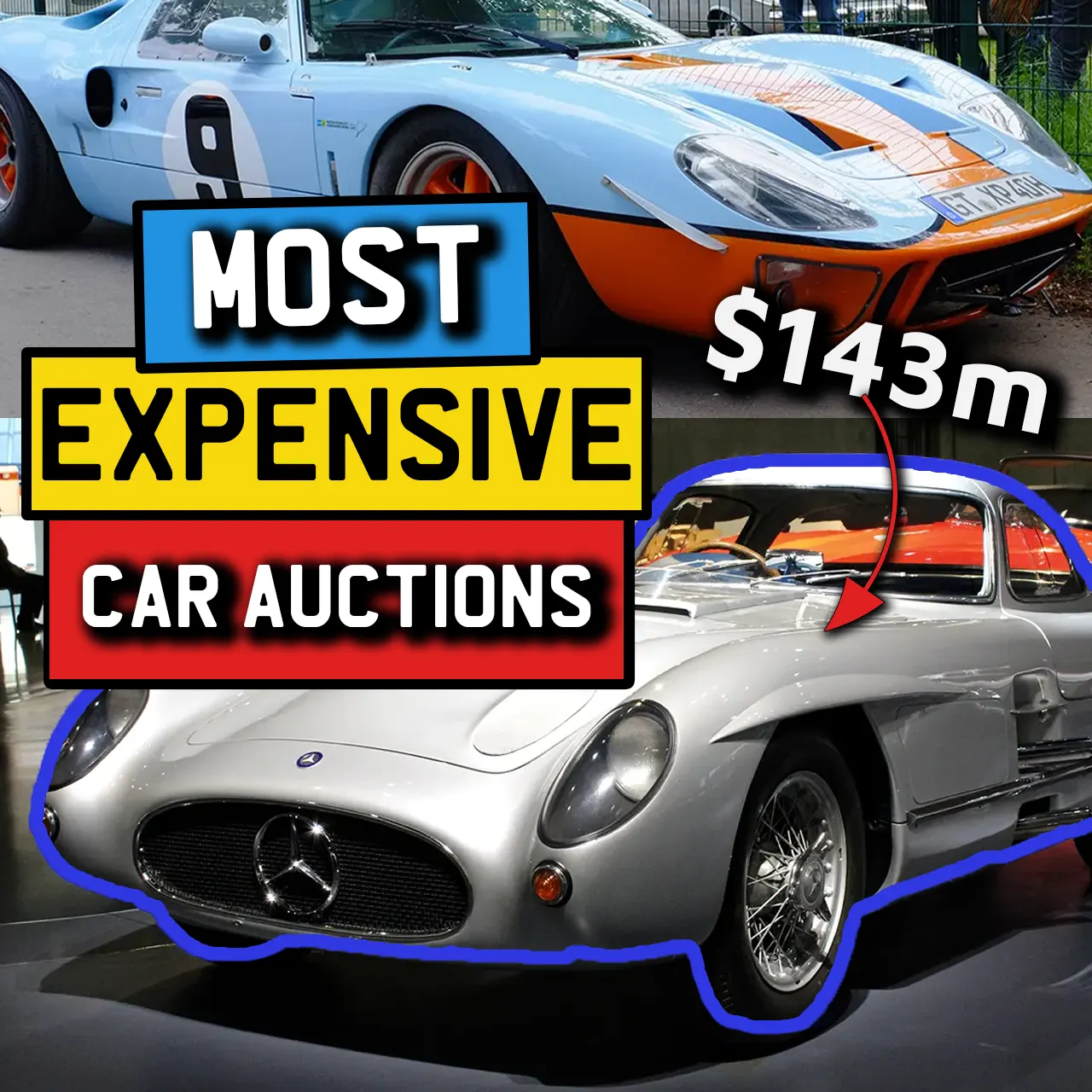The Early Daredevils – A Glimpse into the First Car Speed Records
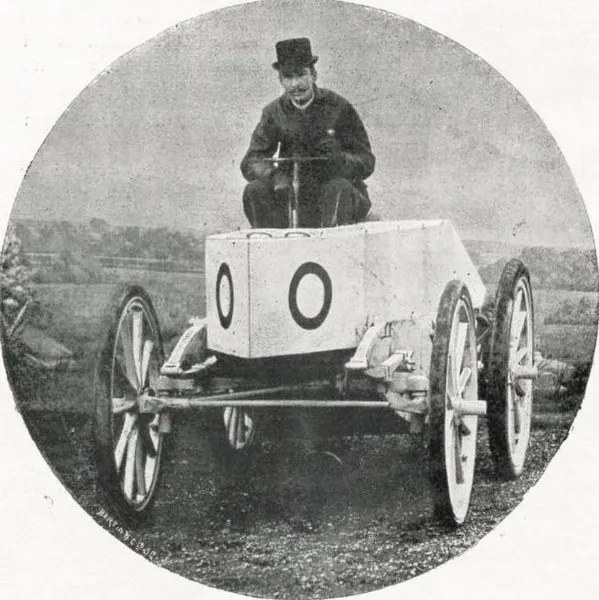
In the twilight years of the 1800s, the auto industry was still in its infancy, but daring men and women were beginning to push the boundaries of speed. One famous pioneer was Count Gaston de Chasseloup-Laubat, a French racing driver who set the first official car speed record. It was on December 18th 1898 that he roared to a blistering 63.13 km/h (39.23 mph) in his Jeantaud electric car. This feat earned him not just the world land-speed record, but also a place in the annals of automotive history.
He would go on to improve his record to 66.65 km/h (41.41 mph) a month later. The Count’s achievement opened the floodgates for a flurry of attempts to dethrone him. One such competitor was Camille Jenatzy, a Belgian racing driver. After a series of duels between the two racing drivers – each setting new records – Jenatzy became the first person ever to break the 100 km/h (60 mph) barrier in 1899. Rivalry between these early daredevils set the stage for the pursuit of speed and captured the public’s imagination.
With these humble beginnings, the need for speed has become a central theme in automotive culture. We continue to push the boundaries of engineering and human daring to this day. These early adrenaline-filled stories of the original racing daredevils continue to inspire and influence the modern world of racing and car design even today.
The Landmark Achievement of the Campbell-Railton Blue Bird – breaking 300 mph
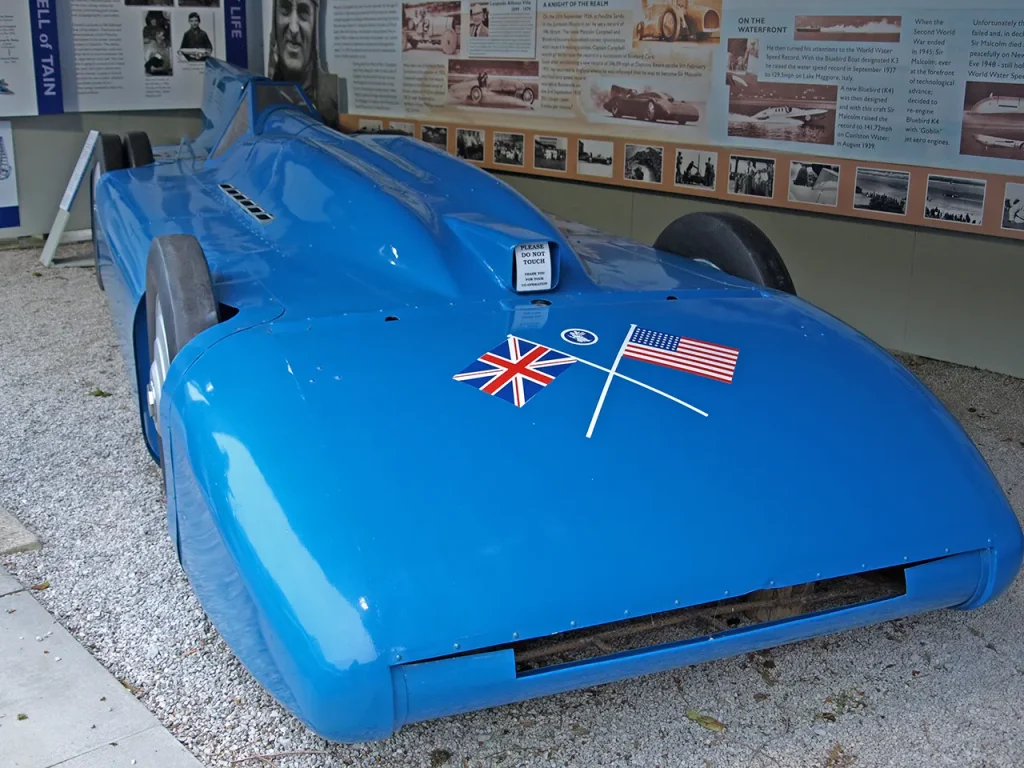
There are few moments in history that exemplify the need for speed as dramatically as when Sir Malcolm Campbell broke the 300 mph barrier in 1935. Driving the Campbell-Railton Blue Bird, Sir Campbell shattered his own land speed record with a speed of 301.337 mph on the Bonneville Salt Flats in Utah.
The Campbell-Railton Blue Bird was designed by Reid Railton and was a testament to the technological advancements of the 1930s. The car was powered by a 36.7 litre supercharged Rolls-Royce R V-12 engine that created a whopping 2,300 horsepower! The car’s slender body and streamlined design minimised air resistance, allowing the vehicle to cut through the air like a bullet.
Sir Campbell’s achievement was a huge milestone in land speed records and underscores the continuous push for speed. The innovative and daring design of the Blue Bird captured the world’s attention and secured it a place in history. Today, it serves as a symbol of the enduring determination and ingenuity of engineers always pushing the boundaries of what’s possible.
Customise your 3D number plates
Build unique number plates with our intuitive and fully interactive number plate builder.
Build Your 3D Number Plates
Turbojet Triumph in The ThrustSSC’s Sound Barrier Shattering Run
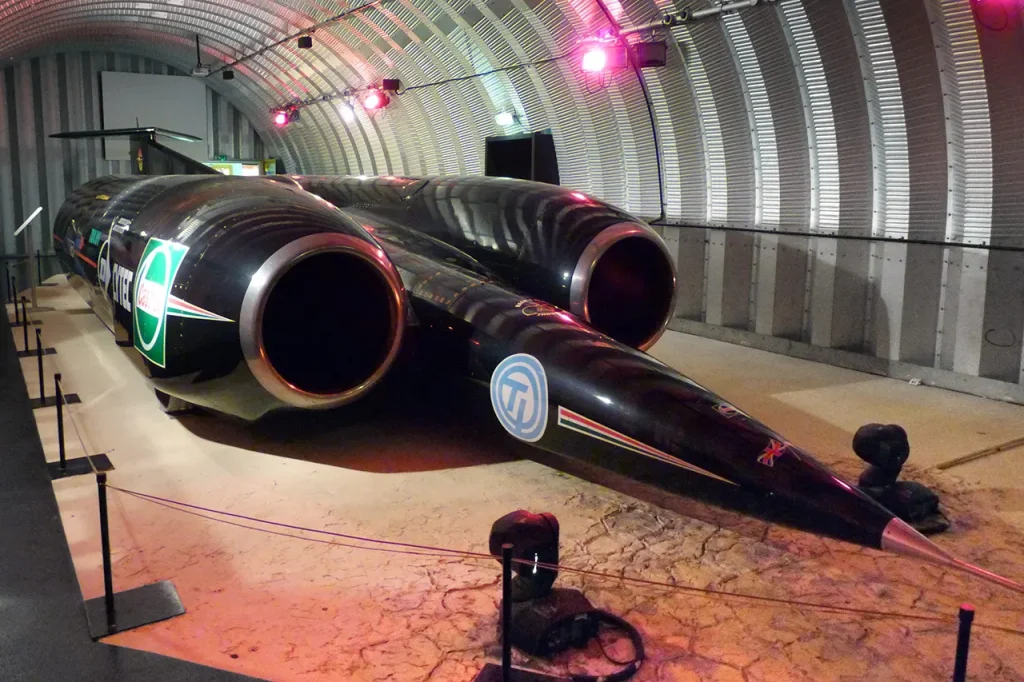
Back in 1997 in Nevada’s Black Rock Desert, RAF pilot Andy Green piloted the ThrustSSC to an astonishing speed of 1,227.985 km/h (763.035 mph) – or more aptly – Mach 1.02. This record broke the speed of sound and has yet to be beaten by another car.
The construction of ThrustSSC (which stands for SuperSonicCar) was supervised by project director Richard Noble. The car is a marvel of engineering, powered by a pair of Rolls-Royce Spey turbofan engines. They originally powered British Phantom II fighter jets and created 110,000 horsepower. The sleek, bullet-like design and 10-ton weight helped to stabilise the car during its supersonic runs.
Today, the car lives in the Coventry Transport Museum as a monument to the boundary-shattering run that inspires awe and wonder. The ThrustSSC’s groundbreaking achievement represents a giant leap forward in automotive engineering and the passion for pushing the limits.
Motorcycle Majesty – The Fastest Two-Wheeler on Earth
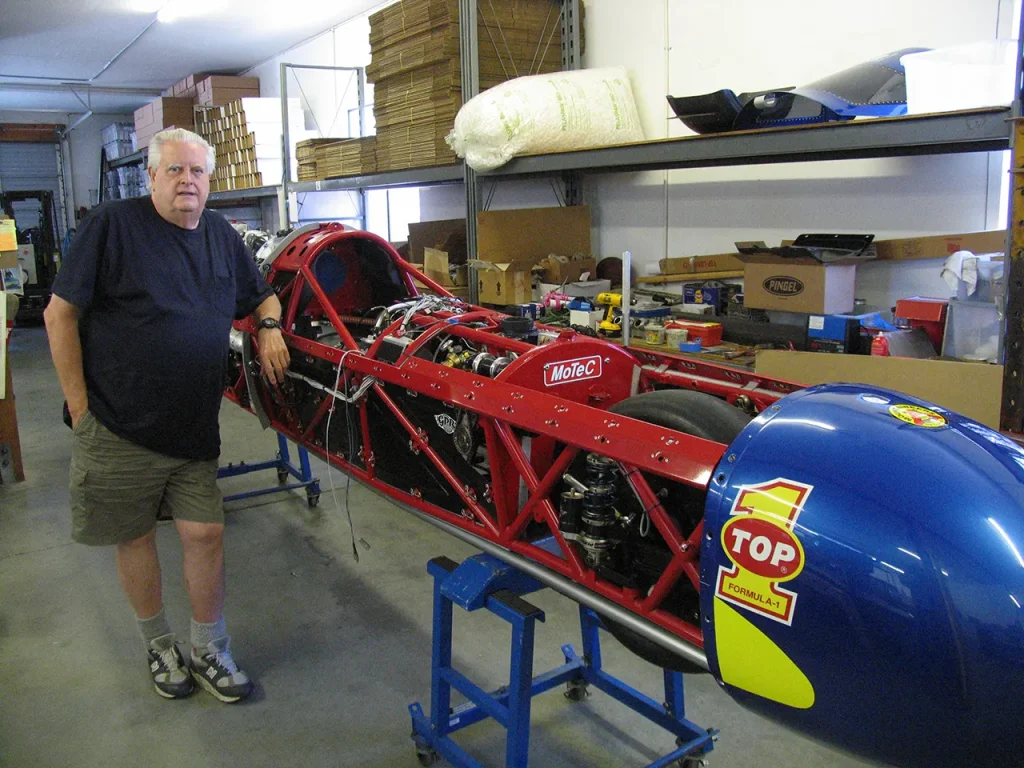
Motorcycles are often overlooked in land speed records, but the TOP 1 Ack Attack streamliner represents the pinnacle of two-wheel performance. In 2010, out on the Bonneville Salt Flats, rider Rocky Robinson rode the Ack Attack with a single goal – to break his own previous record. The bike is powered by two Suzuki Hayabusa engines that use a single Garrett Turbocharger, and produces more than 900 horsepower (or 671.1 kW).
The bike crashed several times before setting a blistering top speed of 605.697 km/h (376.363 mph). The fastest one-way speed was officially recorded at 634.217 km/h (394.084 mph). The Ack Attack’s success was the culmination of years of planning, meticulous engineering, and unyielding determination from a team led by Mike Akatiff. Each element of the bike was tuned for speed, from the aerodynamic design to the robustness of its twin engines.
This record is a reminder of the spirit of motorcycle culture. It underpins the unending human quest for speed, regardless of the number of wheels involved, and propels the imagination toward the records yet to be broken.
Further Reading
You may also be interested in: Car Auctions – the 8 Most Expensive Cars Ever Sold at Auction
Electric Velocity: Records Set in the World of EVs
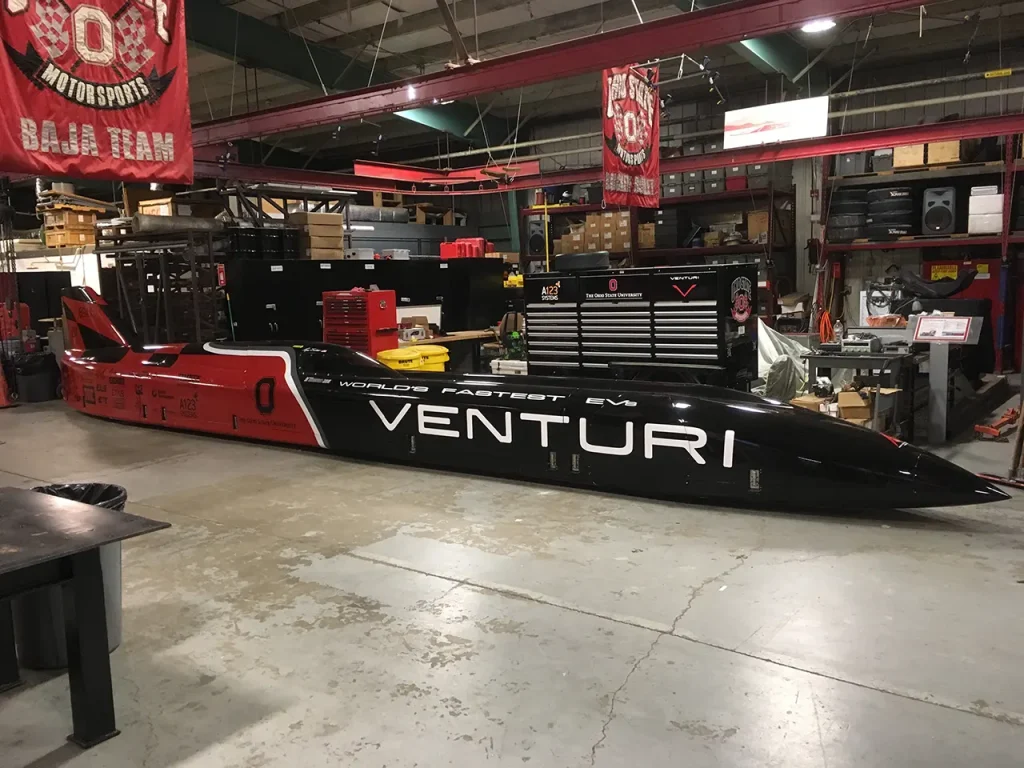
Electric vehicles (EVs) have been rapidly transitioning the core of the automotive industry. This has been accompanied by a growing interest in their performance capabilities, which has led to some extraordinary land speed records.
In 2016, again under the clear skies of the Bonneville Salt Flats, an international team of students from Ohio State University drove the Buckeye Bullet 3 (BB-3) to new heights. The car was built in partnership with Venturi and is powered by lithium-ion batteries and a custom 3000 horsepower electric motor. The BB-3 soared to an astonishing speed of 549.4 km/h (341.4 mph) on 19th September 2016, which beat its own record of 496 km/h (308 mph).
The BB-3s record speed showcases the incredible potential of electric car technology. The car is 4-wheel drive and has separate powertrains for each axle, and each powertrain has two electric motors driving a 2-speed transmission.
Race Track Royalty – The Fastest Lap in Motorsports History
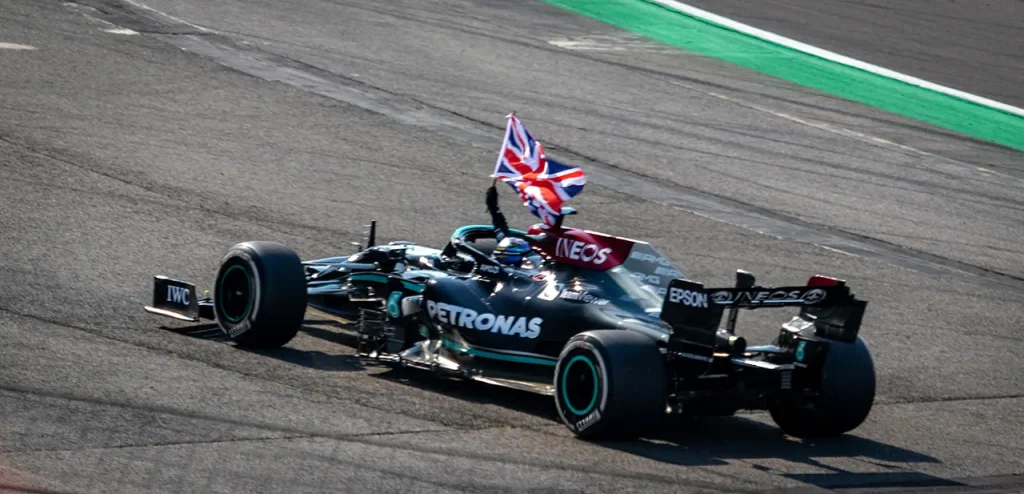
When it comes to motorsports, the pursuit of speed is a relentless quest. Not only are track records a source of pride to the drivers but are a testament to the harmony between machine and driver. At the time of writing (3-June-2023), the fastest lap ever recorded in Formula 1 – the pinnacle of motorsport – belongs to Lewis Hamilton.
Hamilton set his astonishing lap time of 1:18:887 around the legendary Monza Circuit, known as the Temple of Speed. He set this record at the 2020 Italian Grand Prix while driving his Mercedes-AMG Petronas. He averaged 264.362 km/h (164.267 mph), secured pole position, and etched his name further into the motorsport history books.
Hamilton’s record-breaking lap was made possible because of his extraordinary driving skills and Mercedes’ superior engineering. The Mercedes-AMG car was powered by a hybrid power unit that optimizes energy use with a blend of traditional ICE and electrical power. His record is a monument to exceptional auto engineering and the unmatched talent that makes him one of the greatest drivers in Formula 1 history.
Check the lap out here: https://www.youtube.com/watch?v=2f1PtJV0vIs
Highway Hero – The Fastest Road-Legal Car in the World
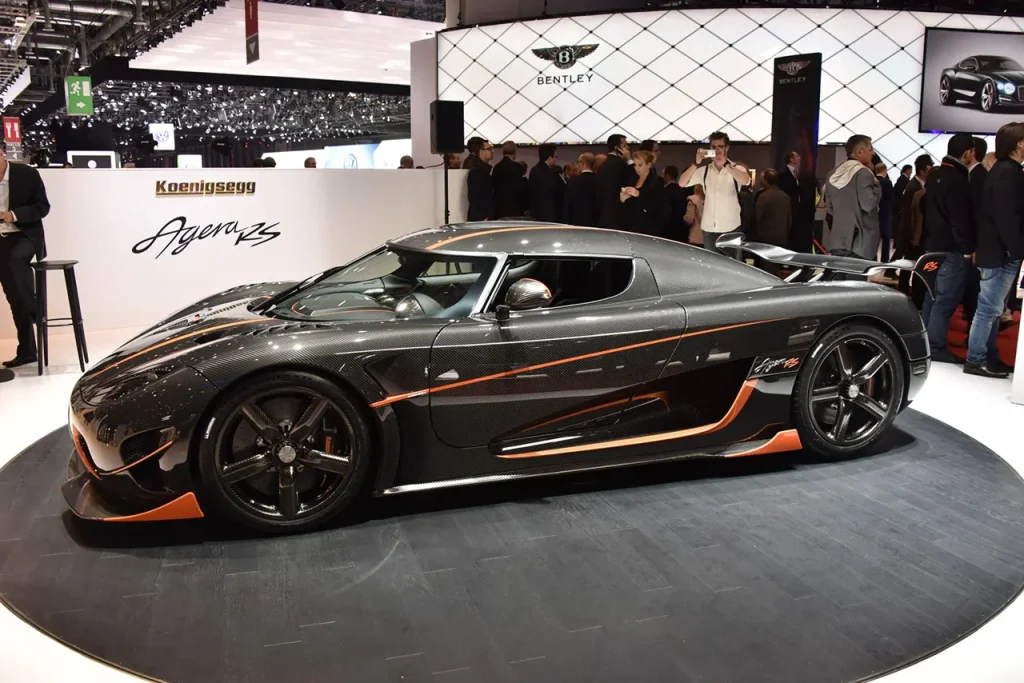
In the world of supercars and hypercars, big brands like to flex their engineering prowess and push the limits of what’s possible. Hypercars are not just about extravagance and luxury – it’s a battlefield for speed. At the apex of these mechanical marvels are the fastest road legal cars – vehicles that balance the extreme speed of a hypercar with the needs of everyday road use. The coveted title is currently held by the Koenigsegg Agera RS.
The Agera RS became a worldwide sensation in November 2017 when it achieved a two-way average top speed of 447.19 km/h (277.9 mph). The record was set on a closed section of the Nevada State Route 160 on an 11-mile stretch of road. Racelogic verified the speed independently, clinching the official Guinness World Record for fastest production car in the world.
The extraordinary feat of the Agera RS is nothing short of astonishing. The car is powered by a 5.0 litre twin supercharged V8 that produces a monumental 1,160 horsepower on regular gasoline and up to 1,341 horsepower on E85 biofuel. The remarkable speed of the Agera RS is not solely due to its power. The car has advanced aerodynamics, a lightweight construction, and precise engineering that each play a critical role in setting the record. The record-setting run of the Agera RS makes it a masterpiece of automotive design and secures it a place in hypercar history.
The Off-Road Ruler Breaking Speed Records in the Dirt
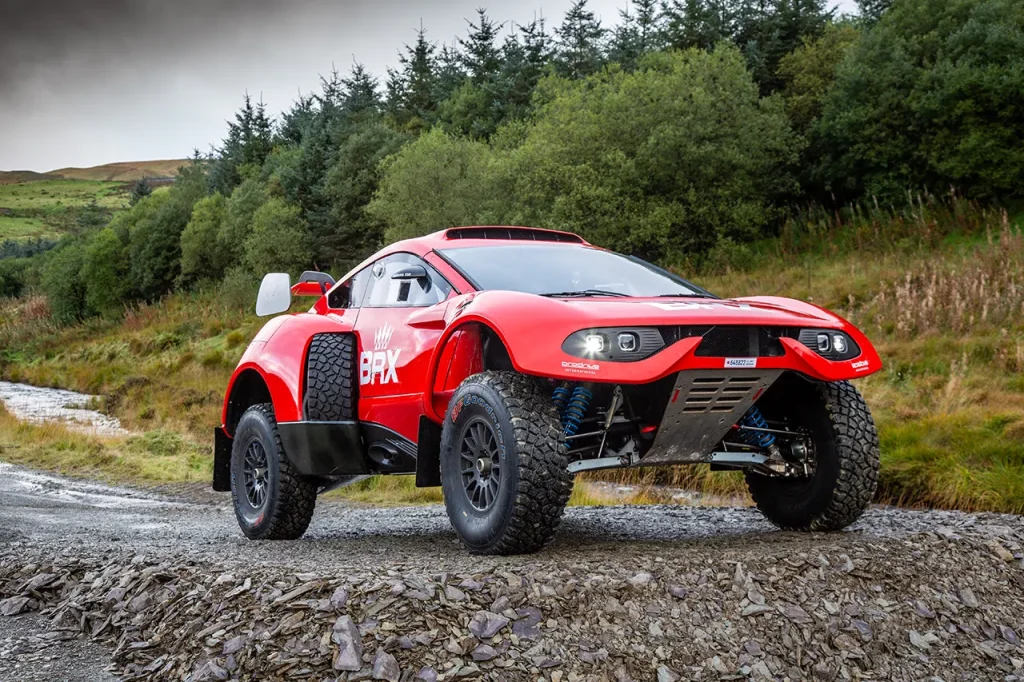
Motorsport records in the off-roading world are often overlooked, but where conditions are unpredictable and the terrain unrelenting, speed records can become a unique challenge pushing both man and machine to their limits. Off-road speed record holders grapple with rugged landscapes and constantly shifting surfaces, unlike their tarmac-hugging counterparts.
This is where cars like the Prodrive Hunter come into their own. Prodrive, a British motorsport company, crafted the Hunter to conquer the harshest terrains at remarkable speeds. Prodrive has an extensive Rally heritage, and the company drew on this experience with the hunter, showcasing an intricate blend of agility, durability, and speed. While the Hunter isn’t as impressive at first sight as its tarmac counterparts, it achieves high speeds in the gruelling off-road conditions.
At the heart of the Prodrive Hunter is a 3.5 litre V6 engine putting out 600 horsepower, an impressive figure for an off-roader. Couple this with its lightweight design, all-wheel-drive system, and state of the art suspension tech, and the Hunter can maintain high speeds even on the most challenging off-road tracks. The Hunter underscores the depth of the engineering mastery needed to conquer the world’s most unforgiving environments.
Future Fast – Upcoming Attempts at Speed Records
Fuelled by innovation, ambition, and a dash of audacity, the need for speed is a never-ending quest. The race to break new records doesn’t stop, and in the pipeline are several exciting prospects that are set to redefine the boundaries of speed.
Hennessey Venom F5
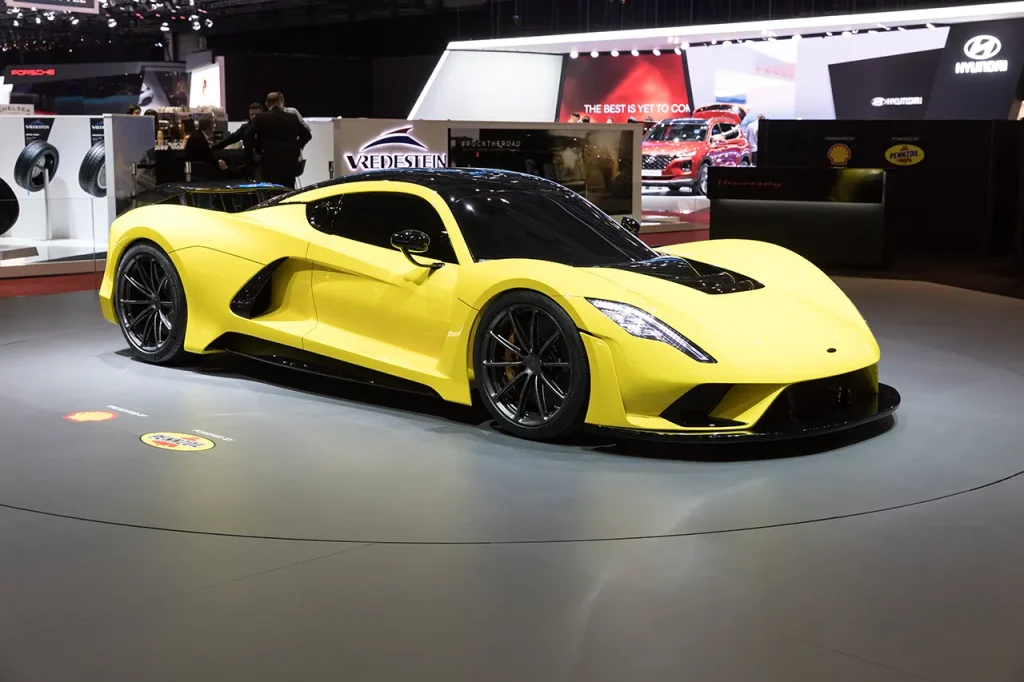
Named after the Fujita tornado scale, the Hennessey Venom F5 could be the first production car to reach 300 mph (482.803 km/h). This highly anticipated contender has been meticulously engineered by Hennessey. The 6.6 litre twin-turbo V8 delivers a jaw dropping 1,817 horsepower and was designed with the specific goal of setting a new production car top speed. The record could happen in 2023.
Further Reading
You may also be interested in: Auto Elites – Discovering Some of the World’s Rarest and Most Extraordinary Cars
Bloodhound LSR
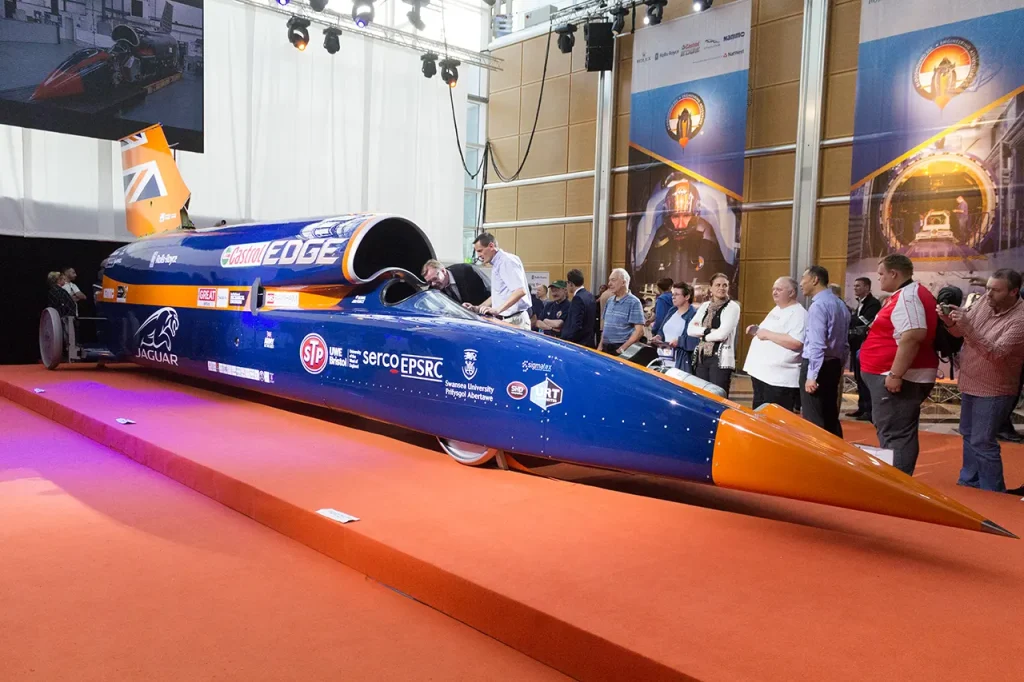
Next, we have the Bloodhound LSR (which stands for Land Speed Record), a contender for a new land speed record. The ultimate goal of the Bloodhound is to break the 1,000 mph mark, but first the team plans to beat the current record held by ThrustSSC. The British-built car is powered by a Rolls-Royce EJ200 jet engine and will be fitted with a rocket engine. Driver Andy Green, current record holder, will attempt to break his own record. Due to lack of funds the rocket engine could not be fitted in 2020, so the opportunity to run the vehicle in 2021 was lost. The team say the project is “very much alive” and if investment can be secured, they believe a new record could be set very quickly.
Rimac Nevera
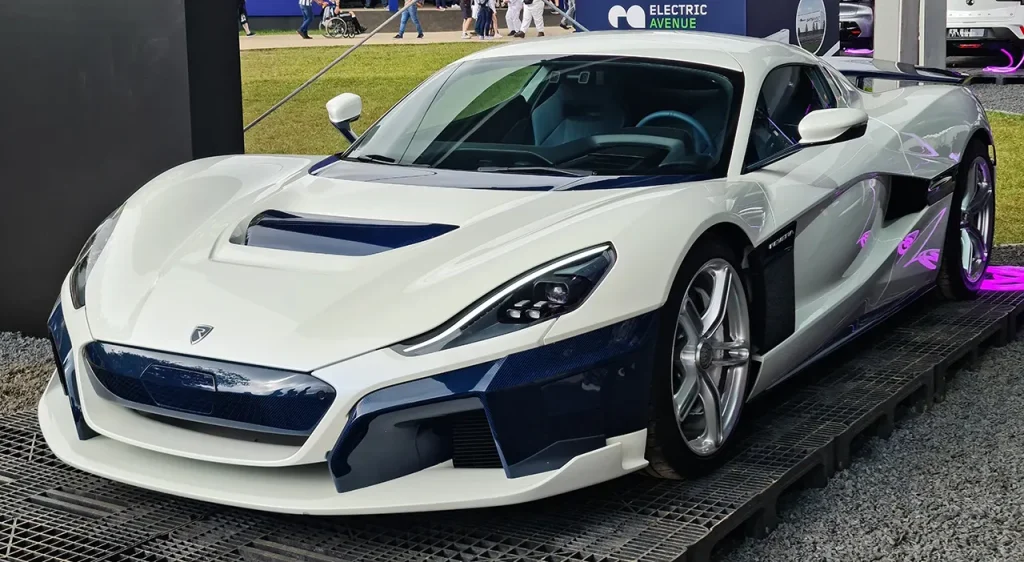
The Rimac Nevera is making waves in the world of electric vehicles. The electric hypercar could take the title of fastest production EV in the world with its 1,914 horsepower (1,400 kW) electric motors and top speed of 412 km/h (256 mph). This space is set to see a considerable amount of competition in the coming years.
With advances in technology, the potential for these record-breaking runs is set to shift into top gear. These ambitious projects could set a new bar for the next generation of hypercars and showcases the continuous innovation that characterises the automotive industry.
